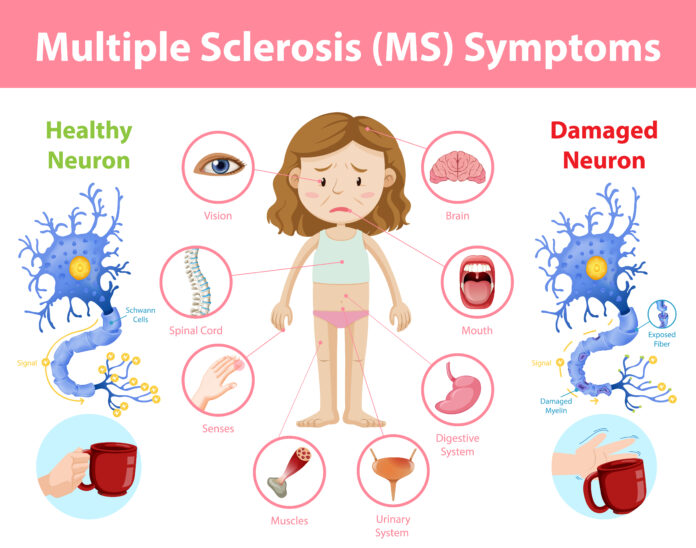A recent Michigan Medicine study found that people newly diagnosed with multiple sclerosis experience a myriad of significant symptoms that often cluster together.
The study, published in Multiple Sclerosis Journal, analyzed data from more than 200 patients in the year following diagnosis with MS. The incurable disease attacks the protective layer of a person’s nerves, which can lead to disability.
Researchers found a substantial number of patients experienced pain, fatigue, depression and anxiety – many reporting more than one symptom at the same time.
“The months following MS diagnosis are often a stressful period of uncertainty and change,” said Thomas Valentine, Ph.D., lead author of the paper and multiple sclerosis rehabilitation research fellow at Michigan Medicine. “Our findings highlight the importance of early and routine assessment of patients’ symptoms, so that those patients who might benefit from treatment can be identified and receive appropriate care.”
The research team collected questionnaires from MS patients at six intervals in the first year of diagnosis. Of 230 participants, half reported pain symptoms, 62.6% felt fatigued, 47.4% experienced depression symptoms and 38.7% had anxiety symptoms.
Just over one-fifth of all participants had no symptoms. However, nearly 60% of the newly diagnosed patients experienced a cluster of two or more of the observed ailments in the first year.
“One symptom can cause or aggravate other symptoms; fatigue, in particular, tends to cluster with pain, depression and anxiety,” Valentine said. “These results speak to the need for comprehensive screening. If, for example, a patient reports significant fatigue, they should also be asked if they are experiencing pain and other symptoms.”
Multiple sclerosis is typically treated with disease-modifying therapies, ranging from oral medications to injections and infusions. A primary goal of these therapies is to prevent symptomatic episodes, referred to as relapses, but targeted symptom management is also key to improving quality of life.
Optimizing treatment for these patients will require approaches that account for the complex relationship between these clustering symptoms, said Anna Kratz, Ph.D., co-author and associate professor of physical medicine and rehabilitation at Michigan Medicine.
“Clusters of symptoms as seen in many patients in the first year after MS diagnosis can seem challenging but may also present opportunity to identify treatments that address multiple symptoms at once,” Kratz said. “For instance, antidepressants can help with both mood and somatic symptoms. When clinicians see these clusters of symptoms, their minds should turn to the options that interdisciplinary rehabilitation care can offer to address multiple symptoms at once.”
Researchers also noted the trajectory of patient symptoms fluctuated over the course of the one-year observational period. Some who did not feel pain or fatigue in the first month after their diagnosis reported it months later, while others who were depressed or anxious early did not report the same symptoms later that year.
However, these changes over time were very modest. The results can offer a bit of hope to patients with mild symptom burden soon after diagnosis, as they suggest a person would not expect to see dramatic increase in symptoms within the first year after diagnosis, Kratz noted.
The team concluded that future studies should examine how changes in symptom severity over time relate to disease activity, disability and treatment.
“Finding the factors that predict symptom clustering, stability and change will help healthcare providers match prevention and treatment programs to patients,” Valentine said. “We have many effective treatments, but more research is needed to optimize these tools for people with MS. This is particularly true for people early in diagnosis, which may prove to be an optimal time to initiate symptom prevention strategies.”
Story Credit: Newswise
Photo Credit:brgfx/Freepik



































